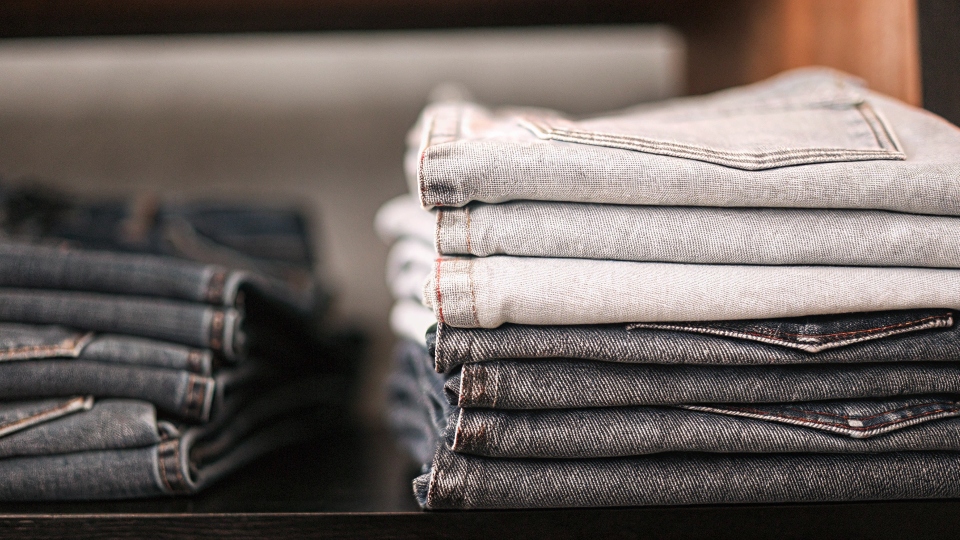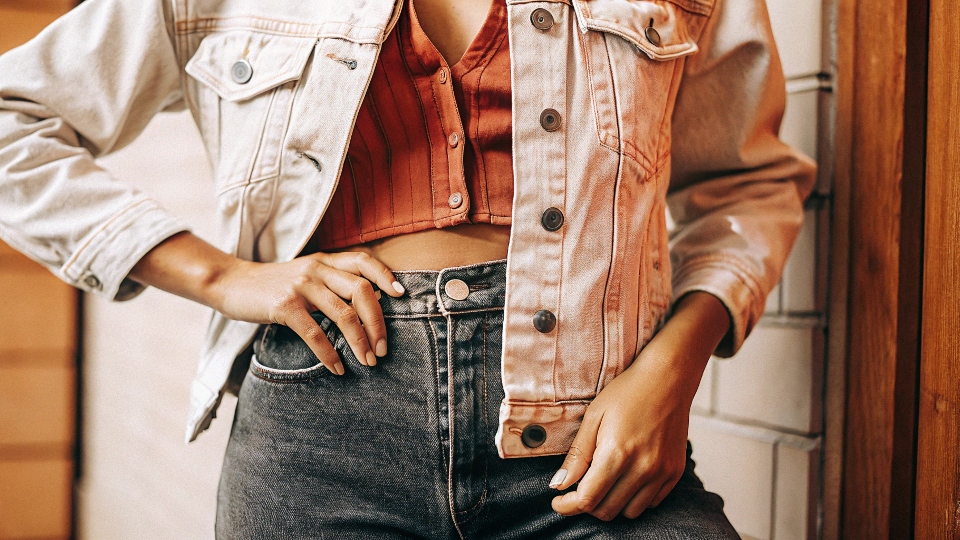You buy the perfect pair of jeans, but after a few wears, the knees get baggy and the color seems off. You think you just chose poorly, but maybe the problem is the fabric itself.
Denim's main problems are rooted in its manufacturing process. It naturally has issues with color consistency1 (shade variation), unpredictable shrinkage, and a tendency for stretch fabrics to lose their shape ("growth"), making quality control a major challenge.
As someone who has managed the DiZNEW denim factory for over 20 years, I can confirm your suspicions. Denim is not a perfect fabric. In fact, it's full of inherent quirks that we constantly battle. Your insight about these issues is spot on.
What you see as a flaw in a single pair of jeans, I see as a large-scale manufacturing challenge across tons of fabric. A designer like Dean needs to understand these underlying issues to design products that work with the fabric's nature, not against it. Let's pull back the curtain on the real problems we face with denim every single day.
What are the negatives of denim fabric?
You want a pair of jeans that fits the same way every time you wear it and looks just like the one you saw online. But denim often has other ideas, making consistency a real struggle.
The primary negatives are its inconsistency. Denim suffers from shade variation2 between production batches, it shrinks when washed, and stretch versions can permanently stretch out, leading to baggy knees and a sloppy fit if not made correctly.
In the factory, managing these negatives is our main job. These aren't just minor flaws; they are fundamental properties of the fabric that we have to anticipate and control. Your insight correctly identifies the biggest culprits we deal with.
The Challenge of Color Consistency
When we receive a massive shipment of fabric, say 5,000 meters, the color will not be a perfect, uniform blue. The indigo dye3ing process creates slight variations. So, we unroll the fabric and use a device that measures the color with what we call LAB values.
We pick one roll as the "master" shade and then group the other rolls into batches that are visually close. This prevents a customer from getting a jacket and a jean that are supposed to match but look completely different.
The Battle Against Shrinkage
Cotton fibers relax and tighten when washed, causing the fabric to shrink. If we don't account for this, a size 32 waist could easily become a size 30 after the first wash. Before we cut a single piece, we take a sample from the fabric roll, wash it, and measure exactly how much it shrinks in length and width. We then adjust the cutting patterns to compensate, ensuring the final garment fits true to size.
The Stretch and Growth Dilemma
For stretch denim, the big test is "growth and recovery4." "Growth" is a bad thing—it's when you stretch the fabric and it stays stretched out. This is what causes baggy knees. "Recovery" is what you want—the fabric's ability to snap back to its original shape.
We test this by stretching a sample and measuring how much it fails to return. High-quality stretch denim has very low growth and excellent recovery, which is a key part of what you pay for.
What is the problem with denim?
You see that your dark jeans leave blue smudges on your new white sneakers. In any other clothing, this would be a massive defect, but with jeans, it's sometimes even seen as normal.
The fundamental "problem" with denim is actually its most famous feature: it's designed to be unstable. The iconic way it fades and wears in is a result of indigo dye loss, a quality that would be considered a major flaw in any other fabric.
This is a fascinating paradox. In every other part of the textile industry, the goal is "colorfastness." You want a red shirt to stay bright red for years. With denim, we do the opposite.
Indigo dye sits on the surface of the cotton yarn instead of soaking all the way through. This is why it rubs off and fades over time, a process called "crocking5." This instability is what allows you to create unique fade patterns on your jeans. A designer like Dean uses this property to create amazing washed-out looks. In my factory, we control this instability.
We can treat the jeans to make them bleed less, or we can use aggressive washing techniques to accelerate the fading process and achieve a "vintage" look right from the start. So, the biggest problem is also its biggest strength, but it needs to be expertly managed.
How bad is denim for the environment?
You hear a lot about sustainable fashion and start to wonder about your favorite clothing. The rugged, natural feel of denim makes you hope it's eco-friendly, but you have a feeling the reality is more complicated.
Traditionally, denim production is very hard on the environment. It requires immense amounts of water to grow cotton and for the dyeing/washing processes, along with heavy use of pesticides and chemicals. However, the industry is changing rapidly.
The environmental impact of denim is historically its darkest secret. The combination of water, energy, and chemicals needed to produce a single pair of jeans was enormous. But this is where the industry has made the most progress in the last decade.
At my factory, we've invested heavily in new technologies to solve these exact problems. It's a journey, but the difference between the old way and the new way is huge.
| Production Step | Traditional Method (High Impact) | Sustainable Method (Low Impact) |
|---|---|---|
| Cotton Growing | Heavy water & pesticide use | Better Cotton Initiative (BCI) / Organic Cotton |
| Distressing | Hand sanding (dust), Potassium Permanganate (chemicals) | Laser technology (no water, no chemicals) |
| Washing/Fading | Multiple high-water bleach washes | Ozone washing (uses gas to bleach, minimal water) |
| Color/Finishing | Water-intensive dyeing and softening | E-flow nano-bubble technology |
These modern techniques allow us to create those beautiful vintage washes and distressed looks that customers love, but with a fraction of the environmental cost. A responsible factory is no longer an option; it's a necessity.
Is wearing denim on denim bad?
You think about pairing your favorite jean jacket with a pair of jeans, but pause. You remember hearing a rule somewhere that this is a major fashion mistake, the dreaded "Canadian Tuxedo."
No, wearing denim on denim is not bad at all—it's a classic look. The key to avoiding the "Canadian Tuxedo" stereotype is to ensure the two denim pieces are in noticeably different shades or washes.
This "problem" isn't with the fabric, but with styling. As a manufacturer who sees thousands of denim garments, I can tell you that the denim-on-denim look is all about creating contrast and balance. When both pieces are the exact same medium wash and weight, it can look like a work uniform.
But when done right, it looks incredibly stylish. A designer like Dean thinks about this when creating seasonal collections, ensuring the jackets and jeans can be mixed and matched. It’s actually very simple to get it right if you follow a few basic guidelines.
How to Style Denim on Denim
- Vary the Shades: This is the golden rule. Pair a light-washed jacket with dark indigo jeans. Or try black jeans with a classic blue denim shirt. The contrast is what makes it look intentional and stylish.
- Play with Weight: Try pairing a lightweight chambray or denim shirt with a pair of heavy, classic five-pocket jeans. The difference in fabric texture adds another layer of visual interest.
- Fit is Key: Ensure both pieces fit you well. The look falls apart if both the top and bottom are baggy and shapeless. A well-fitting jacket over a slim or straight-leg jean always works.
| The Rule | Do This | Don't Do This |
|---|---|---|
| Color | Mix light and dark washes | Wear two identical mid-wash pieces |
| Accessories | Break it up with a leather belt or non-denim pieces | Overdo it with more denim accessories |
| Confidence | Wear it like you mean it | Look uncertain or apologetic |
Conclusion
Denim's core "problems"—its inconsistencies and environmental footprint—are real challenges. But with modern technology6 and deep expertise, these are problems we can manage and overcome to produce beautiful, responsible garments.
-
Understanding color consistency can help you appreciate the complexities of denim manufacturing and how to choose better jeans. ↩
-
Exploring shade variation will give you insights into why your jeans may not match perfectly and how to select better options. ↩
-
Exploring indigo dyeing will enhance your understanding of denim's unique characteristics and care. ↩
-
This knowledge will help you understand why some jeans lose their shape and how to avoid that issue. ↩
-
Learning about crocking can help you understand why your jeans may stain other fabrics and how to manage it. ↩
-
Exploring modern technology in denim can provide insights into the future of sustainable fashion. ↩










